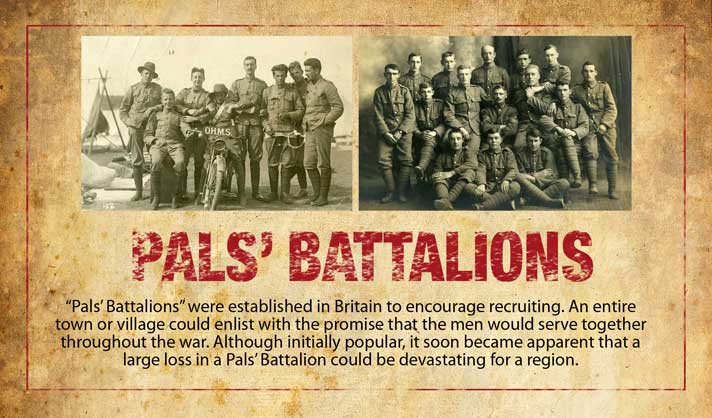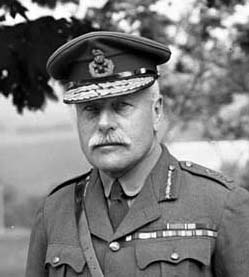Final battle figures revealed 233 men from the Regiment dead, 386 wounded, and ninety-one reported missing (and later assumed dead). Only 110 men from the Regiment remained unscathed after the battle. The casualty rate for many battalions was over fifty percent; for the Newfoundland Regiment, it was eighty-five percent. Only one other battalion, the 10th West Yorks, had a higher casualty rate.

Beaumont-Hamel Fatalities
While Newfoundland and Labrador grieved for its lost men, other regions from across the United Kingdom were similarly affected. In just hours, 19 240 soldiers in the British Army, including those of the Newfoundland Regiment, were dead. There were also 35 494 seriously wounded and 2152 soldiers reported missing. Like the Newfoundland Regiment, many British battalions were made up of men from the same region.

Pals' Battalions
The Rooms Provincial Archives A 8-90 (Left), B 5-157 (Right)
The Regiment's sacrifice at Beaumont-Hamel was noted by Allied leaders. Commander-in-Chief of the British Forces, Sir Douglas Haig, wrote: "Newfoundland may well feel proud of her sons. The heroism and devotion to duty they displayed on 1st July has never been surpassed."

Sir Douglas Haig
Sir Douglas Haig
The Rooms Provincial Archives E-2-16
Despite the devastating losses at Beaumont-Hamel, recruiting efforts for the Newfoundland Regiment continued successfully back home and the Regiment soon rebuilt itself. "The losses in the field have stimulated recruiting," Newfoundland's Governor reported to Field Marshall Haig. However, by the beginning of 1918, the recruiting situation would be more difficult.





